On the intricate relationship between the American director Kenneth Anger, author of the two volumes Hollywood Babylon and of shorts like Invocation for My Demon Brother e Lucifer Rising, Aleister Crowley's Thelema, Charles Manson's Family, film score composer Bobby Beausoleil and the infamous free Rolling Stones concert in Alamont, which in the late 60s would spell the end of the "Aquarian dream" of the hippie counterculture stars and stripes.
di Elizabeth Horkley
originally published on the baffler
on 11 October 2019.
Translation by Marco Maculotti
I have always considered cinema as something evil.
Kenneth Angel
The day it was invented was a black day for mankind.
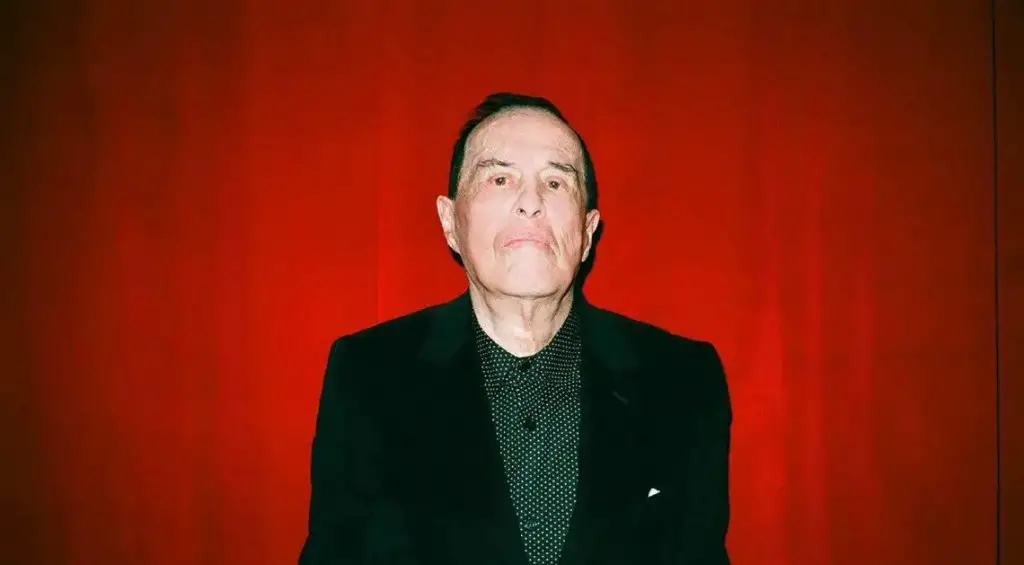
For the 1967 autumn equinox, the avant-garde director Kenneth Angel performed a ritual of Aleister Crowley at a theater in San Francisco's Haight-Ashbury neighborhood. The ceremony, which was meant to summon the Egyptian deity of Horus, was filmed and a couple of years later featured in the Anger short film Invocation of My Demon Brother (1969)
In Summoner, the ritual takes place at an exaggerated speed, reminiscent of the frenetic pace of a silent film. Anger runs around the stage, setting things on fire, waving a swastika flag, and demanding convulsions from his audience. Watching the ceremony, one wonders: were the parents right to worry about their flower children? The hippie pose, as they feared, was just a disguise for Satan Worshipers and “Sour Heads” (acid heads)? Famously described as “an attack on the sensorium” by its creator, Summoner argues the affirmative thesis by forcing the viewer into a scary deal with a torrent of psyche-spoiling documentary footage.
Debuted in the aftermath of the Tate-LaBianca murders in August of the same year, the film presents the Manson follower and member of his family, Bobby Beausoleil, who first smokes a skull-shaped pipe and, in a later sequence, emerges as Lucifer himself. Mick Jagger appears both on screen and off, as composer of the film and in concert scenes in Hyde Park.
Twisting the knife, Anger also inserts footage of a gathering of the Hells Angels, aiming the lens at the back of a man's scalloped jacket, in case its affiliation isn't clear. At that time, there were only a few months left for the participation of the Rolling Stones at free festival in Altamont which, together with the murders of Manson, would have connoted the end of the hippie "Age of Aquarius". in the second half of 1969.
The fatal stabbing of Meredith Hunter, an African-American participant under the influence of methamphetamine, by Hells Angel Alan Passaro, hired by the Stones as security, was by far the mourning event of the festival that received the most media coverage (another concert attendee drowned in a canal and two others died after being hit by a car, plus the fact that paramedics cared for 850 people in bad trips) no doubt due to its inclusion in the film Gimme shelter (1970) by the Maysles brothers. The Maysles may have caught the murder as it happened, but Anger, with his means, captured the violence of that December night months earlier.
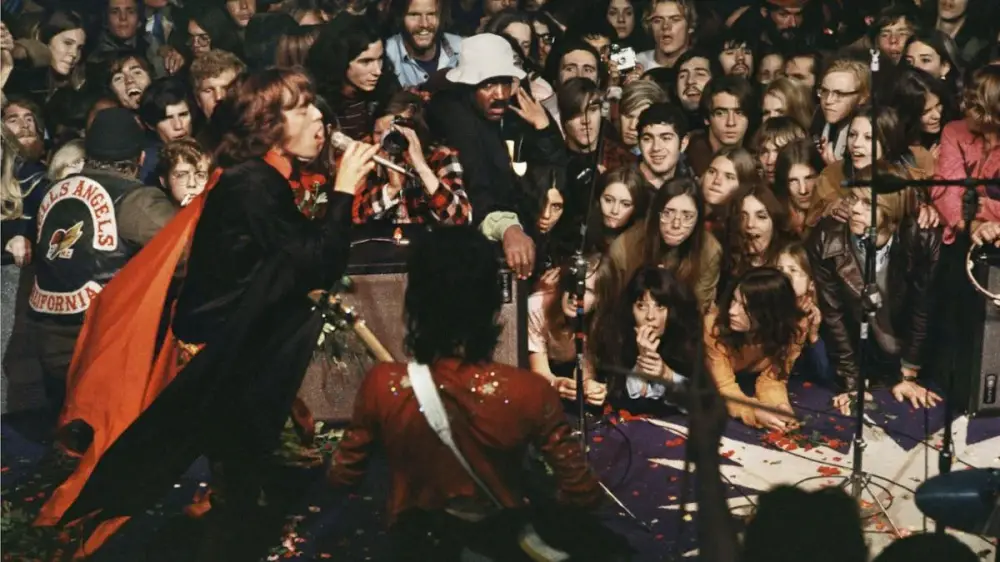
Invocation of My Demon Brother it is part of a body of work known as Magic Lantern Cycle, a very personal way of saying that perfectly sums up Anger's relationship with cinema. The "Magic Lanterns" were optical projectors that preceded the first films; the extra “K” was a nod to Aleister Crowley and his religion of thelema ( "Magick“, as defined by Crowley, is the science and art of causing change to occur in accordance with will»).
Anger is a devotee and most of his films reflect his interest in the occult, both in theme and execution. His passion for Crowley developed in harmony with hers fascination with the old Hollywood. Born in 1927, Anger had a close relationship with his grandmother, who was a draftsman during the heyday of silent cinema. His grandmother told young Kenneth gossip meant to be a cautionary tale, but Anger sensed something sacred in these tales of debauchery and listened to them.
In its early years, the cinema came under attack from reformers who worried about its influence on children. They believed that movies had a hypnotic effect on children that could compel them to act in ways they otherwise would not. As one psychologist argued in 1916, "the sight of crime can force itself upon the conscience with disastrous results". This logic borders on superstition: a notion that Anger embraces. “I've always considered movies evil; the day cinema was invented was a black day for mankind,” he told British film critic Tony Rayns shortly after the release of Summoner.
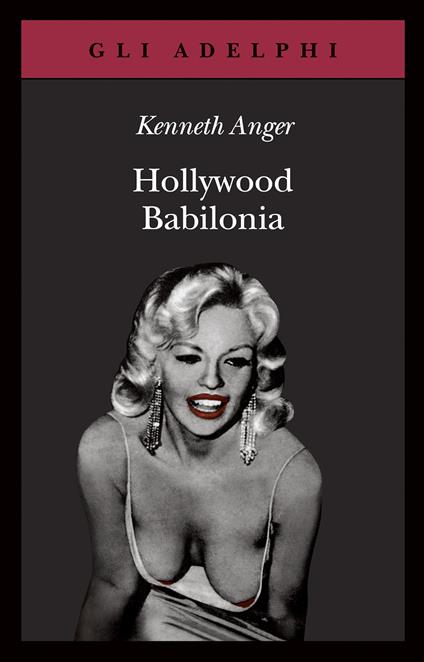
From his grandmother's stories, Anger drew two books on Hollywood's "darkest and best-kept secrets.": the tomes of Hollywood Babel, in which Anger sneers at the indiscretions of the stars, exaggerating and inventing details with a fanfiction elegance. But Hollywood Babylon does not just discuss the fate of screen stars for the umpteenth time. The work also focuses its telescopic lens on the big names who have worked behind the scenes of the industry: director and choreographer Busby Berkeley, financier William Randolph Hearst and, memorably, the beloved actor and director Charlie Chaplin. While many of the claims in the books have been debunked, others serve as reminders of serious crimes that have disappeared from the headlines and public discourse. Anger's writing recalls that Chaplin, who was still alive when the first book was republished in English in 1975 (he was quickly banned when first published in the United States in 1965), had a long history of courting underage girls.
Anger faced this dreary set with chilling candor, admitting to Rayns, "My films are mostly about sexuality of people. The reason why filmo has nothing to do with 'cinema'; it's a transparent excuse to catch people, the equivalent of saying: 'Come and see my engravings'». When she met Bobby Beausoleil in 1966, Anger asked the handsome XNUMX-year-old musician to "come up and see his recordings." In his podcast, You Must Remember This, movie star Karina Longworth dedicates an episode to their relationship. She reports that Anger wooed Beausoleil with grandiose promises. "You will become my beloved," she told him. "And through me you will become feared and revered."
Beausoleil moves in with him. Apparently, they would start filming Anger's next project, Lucifer Rising, with Beausoleil in the eponymous role. Showered in acid and adoration, Beausoleil came to believe that he really was "the angel of disobedience." But Anger was unable to get his protégé to bed, and tensions rose between the two. When the 'pizzas' of Lucifer Rising disappeared, Anger was quick to accuse Beausoleil of theft. The director recovered what was left, using the remaining material in Invocation of My Demon Brother (only later would he rework completely Lucifer Rising, publishing it in 1980).

Beausoleil had no choice but to leave the city. Anger evicted him and publicly announced that he had cursed him, so Beausoleil headed south to Los Angeles. Gary Hinman, a musician and music teacher with an open-door policy for wanderers, took him in. Around that time Beausoleil also befriended Charles Manson, on whose orders he allegedly killed Hinman in July 1969. Arrested and charged shortly after the murder, Beausoleil was found guilty and sentenced to death. His sentence was commuted to life in prison when California temporarily outlawed the death penalty in 1972, and Beausoleil remains in prison to this day.
So, did the spell work? It's an absurd question. But Anger invites us to speculate about its mystical powers. The introductory notes of Invocation of My Demon Brother they are unusually sparse, as if Anger himself were unable to summarize the eleven minutes of film. He merely provides two sentences describing the structure of the invocation ritual, followed by a quote from Crowley:
True Horus magic requires the passionate union of opposites.
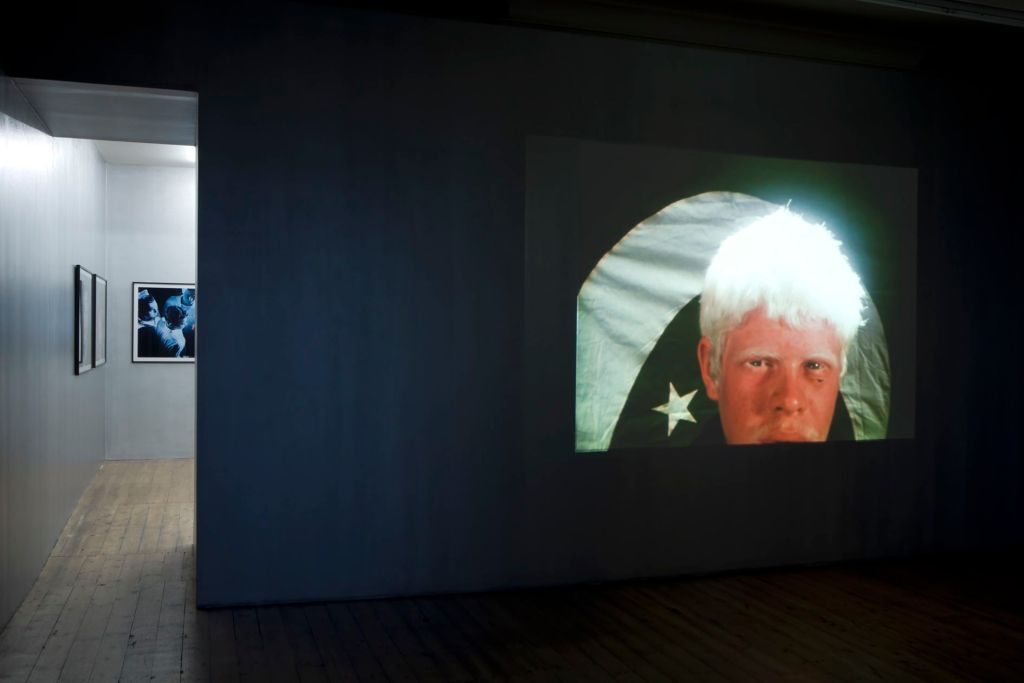
Summoner opens with a static image of three yellow circles arranged in a pyramid on a black background, which fade to red before the movie starts. The first figure we meet is that of a young albino. Anger prompts us to regard this man's eyes as our own. He stares sleepily into the distance and we see a man's bare torso pointing a knife to his chest. He looks to the left and sees two young naked men stretched out on a sofa in a dimly lit blue room. He looks to the right and sees other similar things. After flashing a tattoo of an esoteric symbol, he holds a glass rod to his forehead. Looking forward, he sees a twisted pair of legs in blue jeans dangling against a flat red background. Then the first of several Vietnam newsreels appears: soldiers disembarking from a helicopter, bathed in red. Anger stated that this image covers the entire film; with infrared goggles, we could see her throughout the film.
The helicopter footage is followed by a burst of light and a close-up of the eyes of the "Wand Bearer", which appear to vibrate. Anger told film scholar Scott MacDonald that she chose the actor because of this condition: he was fascinated by the way his eyes moved when exposed to artificial light. As a reference figure for the public, the trembling of her eyes echoes the chaos which we have already witnessed and which will continue to precipitate in a climax of baffling special effects.
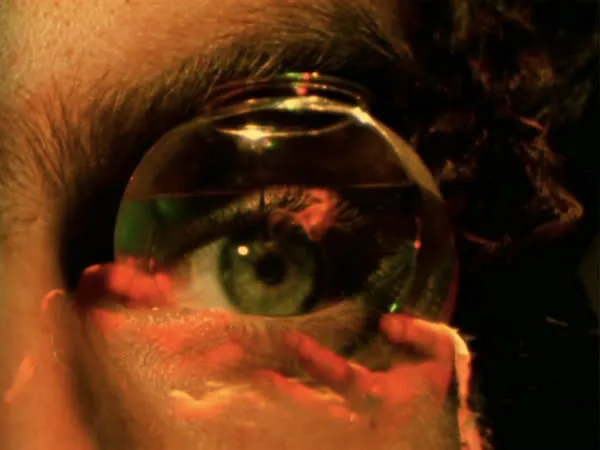
Throughout the short film the Jagger soundtrack, simple and insanely repetitive, it opposes the frenetic images of Anger. Using a Moog synthesizer, Jagger created a sound similar to an ambulance wail compressed into three plaintive bleeps, followed by a reverse scratching record, running this tune about two seconds with little variation throughout the film. . In the pandemonium of the film's final moments, a Golliwog doll dressed as a voodoo priestess faces the public with a sign that reads:
ZAP
YOU'RE PREGNANT
THIS IS SORCERY

The figure initially seems to be a self-deprecating joke, which reduces the note Anger's reputation as a "Satanist" to a caricature (il cameo by Church of Satan founder Anton LaVey as “His Satanic Majesty” is similar). But considering Anger's complex belief system and her Hollywood heritage, the scene can also be taken as a mission statement. Summoner it ends, in fact, with a shot of the Eye of Horus, followed by that of a shirtless man raising his hands above his head to form a pyramid in imitation of the introductory arrangement of the three circles, then detaching them to form a "Y". The same three circles conclude the film, this time inverted. If the summoning of Horus is based on the union of opposites, we can conclude that it was successful. “Enchanting” is a word often used in film criticism. With Invocation Anger takes hyperbole to literal scope.
In this way, he assumed the mantle bequeathed by Georges Mélies. An illusionist by profession, he later turned to cinematography and was the pioneer of special effects in cinema that fueled rumors of witchcraft in the early XNUMXth century. But when William Hays was named president of the MPAA (then called MPDAA) in 1922, those rumors having been replaced by a less magical moral panic about motion pictures and Hollywood as a corrupting influence. Anger describes the originator of what he would be known as “Hays Code” of Hollywood Babylon as "a primadonna-faced, bat-eared, long-mouthed political sculptor" who "showed up with an avalanche of nonsense." Hays denounced the plight of the industry, acknowledging the influence of films on children and vowing to do good. The Puritan system of censorship he instituted reigned until 1968.
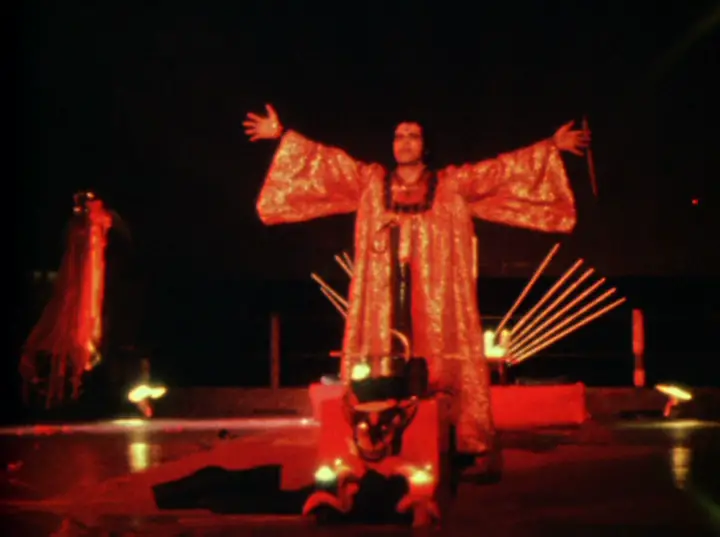
Anger's characterization of Hays is typical of Hollywood Babylon. While idolizing figures such as Clara Bow and Rudolph Valentino, she paints them respectively as promiscuous adulterers and emasculated masochists. Established as a filmmaker at the height of the power of The Hays Code — his film debut, Fireworks, was built in 1947 — Anger's work, blatantly weird, with its explicit depictions of sex, violence and the occult, he needed of Hays' restrictions in order to transcend them and enter a sphere of immortal meaning. Hays' Hollywood rolling out a red carpet for Anger's alchemical agenda was another "union of opposites".
For the first few decades of his career, Anger operated outside a studio system that was barred from releasing films like his. Working in the belly of countercultural movement, found himself in a unique position to expose its contradictions. Summoner it is ultimately a testament to the power of Anger's vision. He didn't predict the Manson murders with Bobby Beausoleil's casting, nor the Altamont deaths filming the Hells Angels. But Anger recognized the subliminal forces that compelled people to act in ways they otherwise might not.
